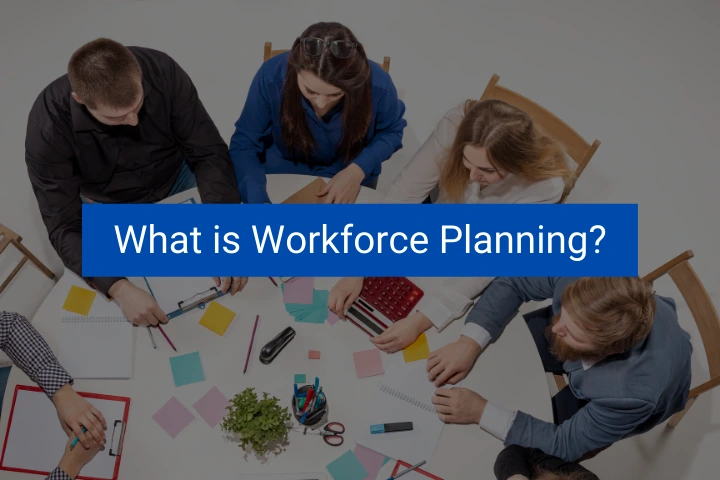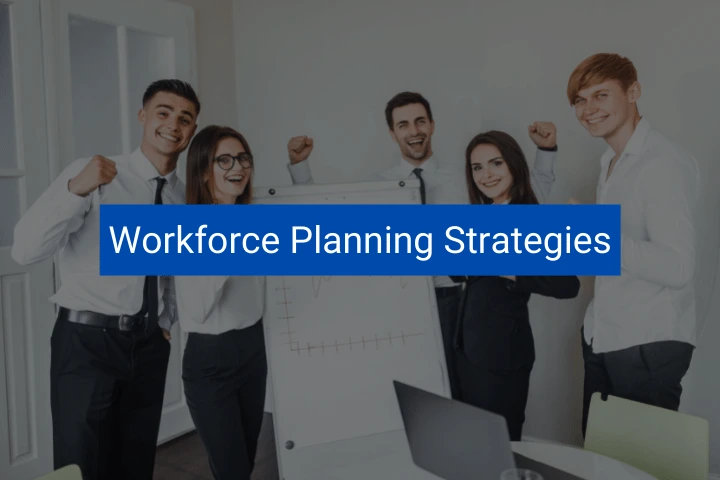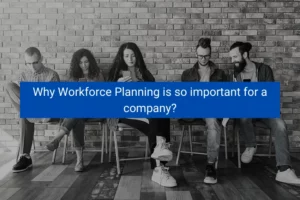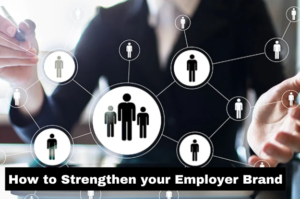Before we get into the meat of the matter, let's define workforce planning.
What is Workforce Planning?
Workforce planning is a business process that allows a company to assess the working capacity of current employees as well as estimate the type and number of workers that will be required in the future based on its future plans. This is part of the strategic plan for achieving the anticipated corporate growth. Given the nature of the job, it should be a centralized unit that oversees all aspects of the company's operations. Workforce planning is now included in the human resource development cell.

It goes without saying that a company's success is mainly dependent on its productive employees. However, management must determine if the existing structure is suitable in light of current work pressures and future workforce and labor supply predictions in order to maintain the proper pace.
Objectives of Human Resources Management
Workforce planning is a continuous, 360-degree process of aligning the company's corporate vision and goals with the workforce's capabilities and aspirations. This is so that all of these aspects can be combined to generate the most money and goodwill for the firm while maintaining the highest level of customer happiness.
The scope of workforce planning extends beyond the HR department of a company to all levels of management, employees, and customers. This can be a critical link in the chain in organizations with a high consumer interface because client responses invariably get translated onto the company's products, goods, or services. This ultimately determines whether a person's reputation is made or broken.
Workforce Planning Strategies
Strategic workforce planning also aids in identifying existing and future employee training needs, as well as aligning your recruitment strategy with your company's strategic goals.

Clever staff planning ensures that you have the right number of people, the right skills, in the right place at the right time to meet your company's goals.
Risk Management | Types of Risk Management | Importance of Risk Management
Steps to successful strategic workforce planning
1. Think about the organization's long-term objectives.
As we stated at the outset of this piece, strategic workforce planning is about ensuring that your people are capable of achieving the organization's commercial objectives.
So it's logical to start with those business objectives, right?
What is the company's short- and long-term strategy? What does it intend to achieve and how much human capital does it require to do so?
Employee Engagement | Top 7 Activities of Employee Engagement
This is also why, if you really want to get started with strategic workforce planning, you'll need to get all stakeholders on board first. You'll need support from HR, finance, operations, line managers, and the C-suite, in addition to HR.
2. Examine your current Workforce
What does your current personnel look like? What people and talents do you already have in your organization? Starting with your current personnel, you can develop a strategic workforce plan.
Talent analytics, and particularly workforce analytics, can be extremely beneficial in this situation. It will reveal information about your workforce's age demographics, seniority profile, contract types, and evolution, among other things.
When it comes to reviewing your current staff, there are two main areas to consider: the workforce's quality and the workforce's quantity.
It's all about evaluating your employees' current performance and future potential when it comes to workforce quality. Who is doing well in your company? Is their potential high or low? They'll have varied (development) requirements depending on the answer.
Human Resource Outsourcing | Benefits of HR Outsourcing | Top 10 HR Outsourcing Services
Talent analytics may help you uncover the major drivers of success in your organization, which you can do with the help of talent analytics.
The quantity of the workforce refers to analyzing the size of your staff, including new recruits, employee turnover, and internal promotions, as the name implies.
Check out Erik van Vulpen's guide on strategic workforce planning for a more in-depth explanation – complete with practical examples – of how to measure the quality and quantity of your workforce.
3. Identify future skill shortages
You'll be able to plan ahead once you've mapped out your current staff, including their talents and demands. In terms of prospective skill shortages, at least.
If you do a skills gap analysis, you'll be able to predict when employees will retire, and you'll be able to plan ahead for how to fill the gaps they'll leave behind. Will you hire freelancers and adapt to a more project-based work environment? Do you like to train current employees?
How Human Resource Planning Is Important For An Organization?
Or possibly a hybrid of the two?
Global digitization and technological advancements are other factors to consider. Various research investigations have indicated that this will result in a (digital) skills gap that must be filled.
For example, according to the World Economic Forum's Future of Jobs report, by 2022, 54 percent of all employees will require significant re- and upskilling.
4. Prepare for a variety of eventualities.
Of course, the future is unpredictable. That isn't to say you can't plan for a variety of (unexpected) scenarios.
Take, for example, a grocery cashier. Self-checkout machines are becoming more common in supermarkets, allowing customers to scan (and pay for) their purchases alone.
This means that, in terms of strategic workforce planning, you can already anticipate:
- the demand for cashiers is dwindling
- a probable increase in the requirement for employees to be retrained in order to move into new roles
What is Payroll Outsourcing? Payroll Outsourcing Services | Benefits of Payroll Outsourcing Services
However, being ready for the unexpected extends beyond industry-specific changes.
A sudden, dramatic shift in your company's financial status, or, on a larger scale, a worldwide economic recession, are examples of scenarios.
Furthermore, significant technology advancements and automation are displacing and/or transforming professions in general.
However, while this will alter the world of work as we know it, it is doubtful that every position affected will result in the employee being dismissed.
Instead, it's up to HR – and their strategic workforce planning – to start anticipating now and come up with a mix of attrition, retirement, and up-and re-skilling to avoid future large-scale layoffs.
5. Don't be afraid to seek outside help.
Strategic workforce planning is a difficult endeavor that should not be undertaken lightly. If you want to make sound planning decisions, you must consider a variety of aspects.
What is the Human Resource Information System? Objectives of HRIS.
This is why you should not be afraid to seek (external) assistance. To assist you during (part of) the process, hire a consultant or someone who specializes in strategic workforce planning.
They'll be able to provide you with helpful hints and information on how to get started and keep your planning current.
Conclusion
It's usually a good idea to plan ahead. Especially if you are a large firm that hires for hundreds of positions each year, you must consider how your team can achieve the best production at any given time.
A solid workforce strategy will help you save expenses, prepare for demographic shifts, develop a long-term recruitment strategy, and, at the end of the day, boost your bottom line.
For Human Resource, Payroll and many more HR Services, visit our website https://lingueeglobal.com/



